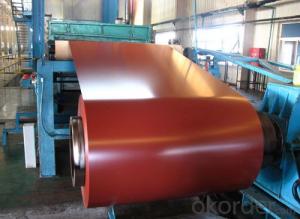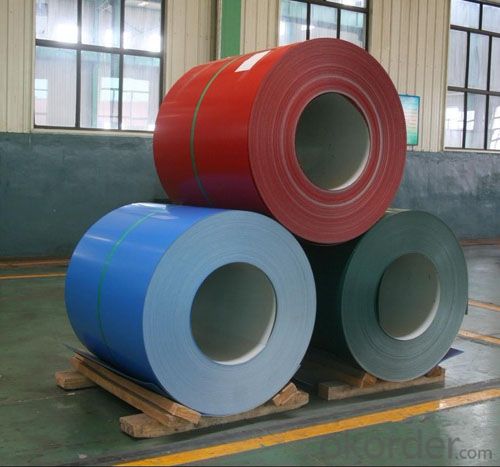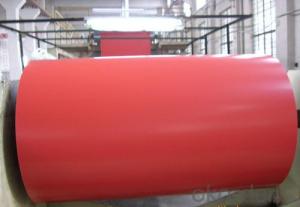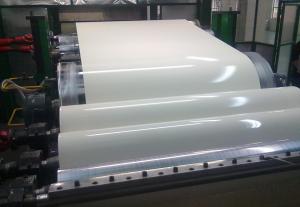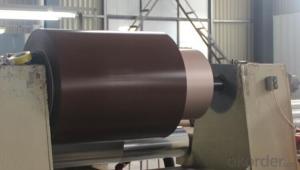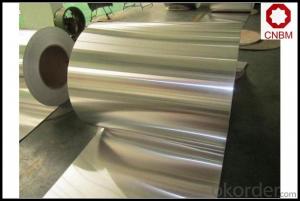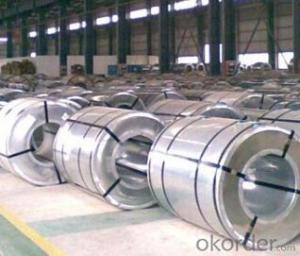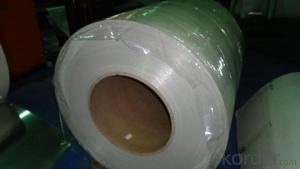Aluminum Galvanized Sheets Cleveland - Coated Aluminum Sheet Coil for Roofing and Cladding System
- Loading Port:
- China main port
- Payment Terms:
- TT OR LC
- Min Order Qty:
- 3 m.t.
- Supply Capability:
- 5000 m.t./month
OKorder Service Pledge
OKorder Financial Service
You Might Also Like
Specification
1.Specifications of Coated Aluminum Sheet Coil For Roofing And Cladding System
| Raw material | A1100/3003/3005/3105/8011 etc. |
| Certificate | ISO9001. ISO14001. SONCAP |
| Thickness | 0.02-3.0mm |
| Width | 1240mm |
| Color | As per RAL or your sample |
| Weight | 1.5-3MT/Coil |
2. Application of Coated Aluminum Sheet Coil For Roofing And Cladding System
Building, curtain wall, ceiling, panels, food packaging, condenser, air filter, refrigerators, washing machines, solar energy, automobile manufacturing, ship manufacturing, machinery manufacturing, electric equipment such as cosmetic packaging, machinery manufacturing industry, can also be used in power plants, chemical anti-corrosion insulation in petrochemical industry, etc.
3. Feature of Coated Aluminum Sheet Coil For Roofing And Cladding System
*Such coil is specially designed to replace aluminum ingot, due to the high export tax of aluminum ingot, the coil has better price than ingot.
*This type of coil can fit customer's remelting furnace just like ingot, no need to make any change to the production line that was previously used for ingot. The standard coil size and weight is very suitable for the feed gate of furnace.
*This type of coil causes less material wastage than ingot when remelted.
*Our coil is made directly from ore, no need to go though the ingot making process, quality is much better than other suppliers who use ingot scrap to make coil.
Be free from Oil Stain, Dent, Inclusion, Scratches, Stain, Oxide Dicoloration, Breaks, Corrosion, Roll Marks, Dirt Streaks and other defect which will interfere with use
4. Certificate:
SGS and ROHS(if client request, paid by client), MTC(plant provided), Certificate of Origin(FORM A, FORM E, CO), Bureau Veritas and SGS (if client request, paid by client), CIQS certificate
5. Image of Coated Aluminum Sheet Coil For Roofing And Cladding System
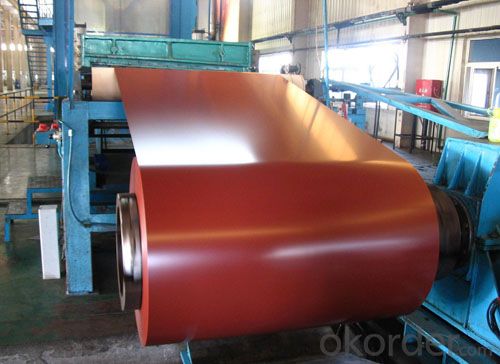
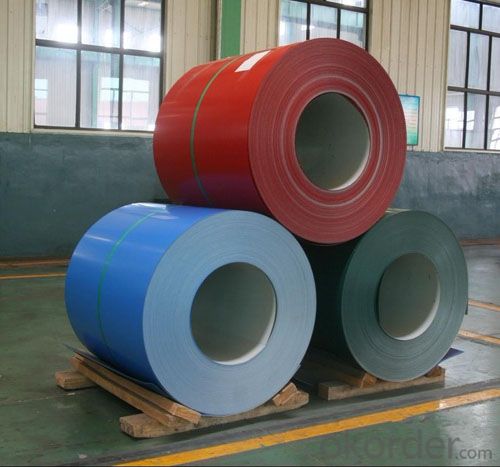
6. FAQ
1) What is your delivery time?
Our regular production time is over 30 days, It depends on the order quantity also.
2) What is your payment term?
We accept T/T, LC at sight, Usance LC 30, 60, 90, 120, 180 DAYS.
3) What is your price structure?
Our foil price is based on Shanghai Metal Price(SMM), not LME, but we could offer LME+ Conversion for your reference.
4) What is your Delivery term?
We do FOB, CFR, CIF, we don't do DDP.
5) Could you offer sample?
We could offer sample as your requirement. A4 Size sample is free for you, for bigger roll sample, it depends on the coil weight.
- Q: Can aluminum sheets be used for industrial shelving?
- Certainly, industrial shelving can indeed make use of aluminum sheets. Aluminum, being a material that is lightweight and durable, offers numerous benefits for industrial shelving applications. It possesses resistance against corrosion, making it suitable for environments that face exposure to moisture or harsh chemicals. Moreover, the strength-to-weight ratio of aluminum proves advantageous, enabling the creation of robust shelves capable of supporting heavy loads while remaining relatively light in weight. Furthermore, aluminum is low-maintenance as it does not necessitate painting or sealing like other metals. Consequently, aluminum sheets are an incredibly practical option for industrial shelving due to their durability, resistance to corrosion, and lightweight characteristics.
- Q: Are 101 aluminum sheets suitable for cryogenic applications?
- No, 101 aluminum sheets are not suitable for cryogenic applications. While aluminum is generally a good choice for low-temperature environments due to its low thermal conductivity and high strength-to-weight ratio, 101 aluminum is not specifically designed to withstand the extreme temperatures associated with cryogenic applications. For cryogenic applications, materials such as aluminum alloys (e.g., 5083 or 6061) or specialized cryogenic alloys like stainless steel or titanium are typically used, as they possess enhanced properties to handle the extreme cold temperatures without compromising their structural integrity. Therefore, it is recommended to use materials specifically designed for cryogenic applications to ensure optimal performance and safety.
- Q: How much is the price of the 6061 aluminum plate?
- You ask the question is not detailed enough, because 6061 aluminum thick and thin prices are different, domestic and imported prices are different, domestic quality of different prices are also different.
- Q: Aluminum standard 30*25*2500 to 1000 1 how to calculate the number of materials needed?. 2 how to calculate the cutting loss?
- The first is the volume slightly, the aluminum plate as a column volume V= length * width * height =1*2*0.001=0.002 cubic meters and then calculate the quality volume of m= V* density =0.002* density (see you for what kind of concrete, aluminum, aluminum, or Aluminum Alloy? If it's pure aluminum (if it's a high school physics title, or pure aluminum doesn't fit), it's 2700 kilograms per cubic meter.
- Q: Can aluminum sheets be used for packaging applications?
- Yes, aluminum sheets can be used for packaging applications. Aluminum is a lightweight, corrosion-resistant, and durable material, making it an excellent choice for packaging various products. It provides a barrier against moisture, oxygen, and light, which helps to preserve the quality and freshness of the packaged goods. Aluminum sheets can be easily formed into different shapes and sizes, allowing for customization and branding options. They are commonly used for packaging food and beverages, pharmaceuticals, cosmetics, and other consumer goods. Additionally, aluminum sheets are recyclable, making them a sustainable choice for packaging applications.
- Q: What are the different methods of surface treatment for adhesive bonding of aluminum sheet?
- Aluminum sheet adhesive bonding can be enhanced through various surface treatment methods. These methods aim to improve the strength and durability of the adhesive joint. Some commonly employed techniques include: 1. Enhancing mechanical interlock: One approach involves roughening the aluminum surface using sandblasting, abrasion, or wire brushing. This creates a stronger mechanical interlock between the adhesive and the aluminum, ultimately increasing bond strength. 2. Chemical treatment for surface improvement: Chemical treatments can eliminate contaminants, oxidation, or corrosion from the aluminum surface. Acid etching, chromate conversion coating, or anodizing are commonly used methods. These treatments enhance surface cleanliness and promote adhesion by creating a chemically reactive surface for the adhesive. 3. Plasma treatment: Exposing the aluminum surface to a low-temperature plasma discharge modifies the surface energy and eliminates contaminants. This treatment enhances the adhesive's wettability and adhesion. 4. Primer coating: Applying a primer coat on the aluminum surface facilitates chemical bonding between the adhesive and the substrate. Primers are designed specifically to enhance adhesion to certain substrates, thereby improving bond strength and durability. 5. Surface activation: Techniques like flame treatment or corona treatment can increase the surface energy of the aluminum sheet. These methods generate free radicals on the surface, thereby improving the adhesive's bonding characteristics. It's worth noting that the choice of surface treatment method depends on factors such as the specific adhesive used, desired bond strength, application requirements, and the condition of the aluminum surface. It is advisable to consult adhesive manufacturers or experts to determine the most suitable surface treatment method for a particular adhesive bonding application.
- Q: Can aluminum sheets be used for honeycomb panels?
- Yes, aluminum sheets can be used for honeycomb panels. The lightweight yet sturdy nature of aluminum makes it a popular choice for constructing honeycomb panels, which are commonly used in aerospace, automotive, and construction industries for their strength-to-weight ratio and structural integrity.
- Q: Can 101 aluminum sheets be anodized for outdoor architectural applications?
- Indeed, it is possible to anodize 101 aluminum sheets for outdoor architectural purposes. Anodizing, a procedure that enhances aluminum's protective layer, grants it increased resistance against corrosion and deterioration. This technique is frequently employed in architectural applications to safeguard aluminum from outdoor elements. By subjecting the 101 aluminum sheets to anodization, they can be rendered sturdier and better suited for outdoor utilization, guaranteeing their long-lasting appearance and performance.
- Q: What are the different types of alloys used for powder-coated aluminum sheets?
- There are various types of alloys used for powder-coated aluminum sheets, including 3003, 5052, and 6061.
- Q: What is the elongation of aluminum sheets?
- The elongation of aluminum sheets refers to the amount of stretch or deformation that the sheets can undergo before breaking or tearing. It is a measure of the material's ductility or ability to be elongated without fracturing. The elongation of aluminum sheets can vary depending on factors such as the alloy composition, tempering, and processing techniques used during manufacturing. Generally, aluminum sheets have a high elongation percentage, ranging from 15% to 40%. This means that they can be bent, formed, or stretched to a certain extent without losing their structural integrity. The elongation of aluminum sheets is an important property to consider in applications where the material needs to withstand deformation or be shaped into complex forms.
Send your message to us
Aluminum Galvanized Sheets Cleveland - Coated Aluminum Sheet Coil for Roofing and Cladding System
- Loading Port:
- China main port
- Payment Terms:
- TT OR LC
- Min Order Qty:
- 3 m.t.
- Supply Capability:
- 5000 m.t./month
OKorder Service Pledge
OKorder Financial Service
Similar products
Hot products
Hot Searches
Related keywords
